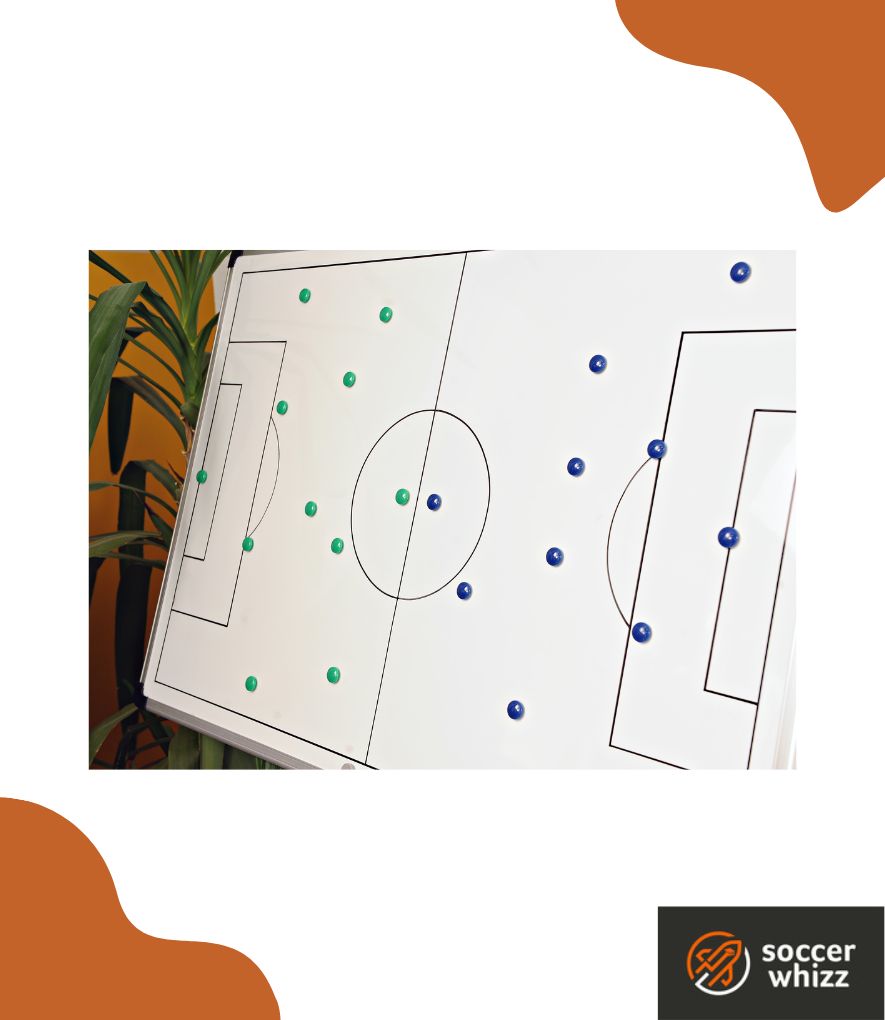The kick off is a unique term in soccer, representing the initiation of play at the start of each half and after a goal has been scored.
It’s an iconic moment that encapsulates the spirit of competition, uniting players, fans, and referees alike in anticipation of what lies ahead.
But beyond its apparent simplicity lies a wealth of strategic, historical, and symbolic implications that make the kick off an integral part of the game.
In this article, we look into the multi-faceted nature of the kick off, exploring its origins, rules, and the impact it has on the dynamics of a soccer match.
From the symbolic nature of who takes the first kick to the tactical considerations that coaches employ, we’ll uncover the intricate layers that make the kick off an essential component of the sport’s fabric.
- Which rules govern the kick off in soccer?
- Where does the soccer kick off take place?
- What positions should players be stationed in when a kick off happens?
- How does a soccer game usually start?
- Can you score from a kick off in soccer?
- Are there any tactical kick off strategies that a team can make use of?
- Final thoughts
Which rules govern the kick off in soccer?
The kick-off serves as the commencement of each half of a soccer match, including extra time, as well as the method of restarting play following a goal.

Here is the procedural breakdown:
- At the start of the match, the referee conducts a coin toss, allowing the team that wins the toss to choose whether to attack a specific goal in the first half or take the kick-off.
- Depending on the outcome, the opposing team either takes the kick-off or decides which goal to attack in the initial half.
- The team that opted for the first-half attacking goal takes the kick-off to initiate the second half.
- In the second half, both teams switch ends of the field, enabling them to attack the opposite goals.
- Following a goal scored, the kick-off is taken by the opposing team.
For each kick-off, the following guidelines are observed:
- All players, except the individual executing the kick-off, must position themselves within their own half of the field of play.
- The opponents of the team executing the kick-off must maintain a minimum distance of 9.15 meters (10 yards) from the ball until it is in play.
- The ball must be motionless on the center mark.
- Upon receiving a signal from the referee, the kick-off commences.
- The ball is considered in play once it is kicked and visibly moves.
It’s possible to score a goal directly against the opponents from the kick-off; however, if the ball directly enters the kicker’s goal, a corner kick is awarded to the opponents.
Where does the soccer kick off take place?
In soccer, the regulations explicitly state that when a team takes the kick-off, the ball must be completely still and positioned precisely on the center mark within the field’s center circle.

It’s strictly prohibited for the ball to be in motion or even the slightest distance away from the center mark.
What positions should players be stationed in when a kick off happens?
During kick-off in soccer, with the exception of the player executing the kick, all other players must be situated within their respective halves of the soccer field.

Additionally, the opponents of the team initiating the kick-off are required to maintain a minimum distance of ten yards (9.15 meters) from the ball until it is officially in play.
This distance is indicated by the center circle, serving as a reference point for positioning.
How does a soccer game usually start?
This happens in three different ways:
First half
At the commencement of a soccer game, the action is initiated by a kick-off from the center of the field.
Prior to the game’s start, the referee engages in a coin toss to determine which team will have the privilege of executing the first kick-off.

The team that emerges victorious in the coin toss is presented with two options.
They can either opt to take the kick-off themselves or choose which goal to attack during the first half.
However, it’s important to note that they cannot exercise both choices simultaneously.
Depending on the decision made by the winning team, their opponents will either take the kick-off or have the opportunity to select the goal they prefer to attack in the initial half of the game.
While it’s commonplace for teams to elect to take the kick-off, there are instances where a team may deliberate starting in one half of the field over the other, resulting in the opposition taking the kick-off instead.
Second half
The onset of the second half in a soccer game involves the team that did not execute the kick-off in the first half taking charge of the kick-off.
To illustrate this, let’s consider an example.
If Team A opted to take the kick-off during the initial half, then Team B will assume the responsibility of the kick-off at the start of the second half.
Conversely, if Team B chose to take the kick-off in the first half, then Team A will be in control of the kick-off at the beginning of the second half.
After a goal is scored
Following a goal scored in a soccer game, the game resumes with a kick-off performed by the team that conceded the goal.
The kick-off takes place from the center mark located in the middle of the soccer field.
Whenever a player successfully scores a goal, the team that conceded the goal always gains possession of the ball for the ensuing kick-off.
Can you score from a kick off in soccer?
During a kick-off in soccer, it’s within the player’s capability to score a goal directly, as explicitly allowed by Law 8 in the rules of the game.
However, it’s equally imperative to note that a player cannot score an own goal from a kick-off.
In the event that such an unfortunate occurrence takes place, the referee will promptly award a corner kick to the opposing team as a consequence.
Are there any tactical kick off strategies that a team can make use of?
As a matter of fact, there are!
Here’s a few of them:
- Opt to pass the ball back to a teammate on your team – this approach prioritizes the retention of possession, allowing your team to have control over the ball and utilize it as desired, ensuring a safer course of action.
- Consider passing the ball sideways to a nearby teammate on your team – this tactic not only maintains possession but also positions your team in a more offensive stance compared to the previous option, facilitating potential attacking opportunities.
- Contemplate playing a long ball, aiming it over the heads of your opponents – this strategy advances the ball up the field, closer to your opponents’ goal. However, it bears a higher degree of risk, as there is a substantial possibility of losing possession and granting the opposition a chance to launch a counter attack.
One of the most unique kick off routines seen in recent times was pioneered by AFC Bournemouth, who manage to pierce through an opposition defence with only a few touches of the ball.
It was so well executed that Spanish giant Real Madrid took notice and tried to replicate it themselves!
Here’s a video which demonstrates this dazzling piece of ingenuity:
Final thoughts
In conclusion, the kick off in soccer transcends its seemingly routine nature to embody a myriad of strategic, historical, and symbolic implications.
From its origins as a means to commence play, to its role in dictating the flow of the game and setting the tone for the ensuing action, the kick off stands as a crucial component of the beautiful game.
Through our exploration of the kick-off’s evolution, FIFA regulations, and tactical considerations, we have gained a deeper understanding of its significance.
We have witnessed how the simple act of the coin toss can shape the dynamics of a match, determining who takes the first kick and which direction the teams attack.
Should you wish to learn more about some of soccer’s other core concepts, then check out the following content pieces on:
- what a soccer rondo is;
- what a corner kick in soccer is;
- what a free kick in soccer entails;
- what a soccer goal kick is all about;
- what a golden goal in soccer represents; and
- what a foul in soccer means
If you enjoy the content that I create and would like to buy me a coffee, then I’d really appreciate it!
Any money that I earn through this donation will be re-invested into more content for this website.
Additionally, by sending in a donation you’ll also receive a copy of my recently released 190+ page eBook on Soccer Ball Care, as well as be subscribed to our mailing list where you’ll be regularly informed on the latest developments concerning the Soccer Whizz blog.
- Future Icons: Europe’s Emerging Midfield Maestros Set for Glory - December 4, 2023
- Kickstarting a Revolution: How Soccer Transformed the United States Over the Last Four Years - October 7, 2023
- 4-1-4-1 Soccer Formation [Analysis] - September 23, 2023

